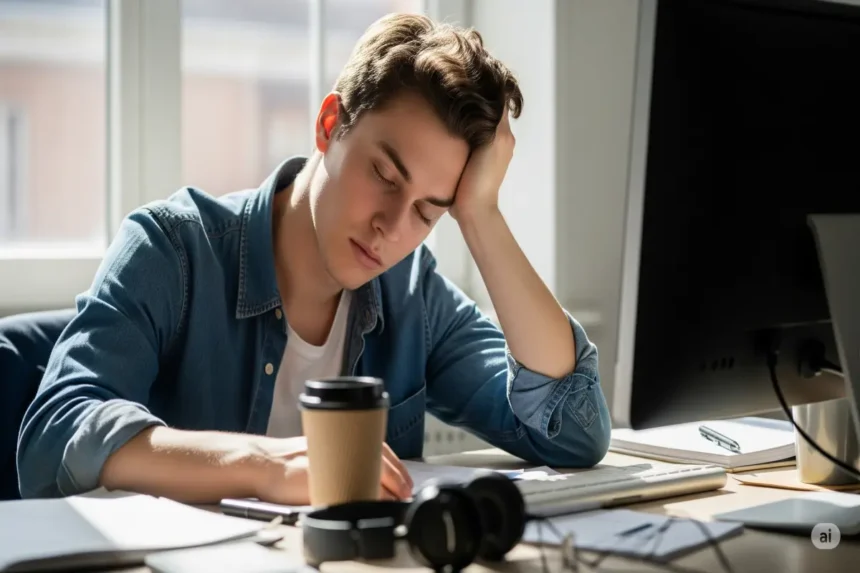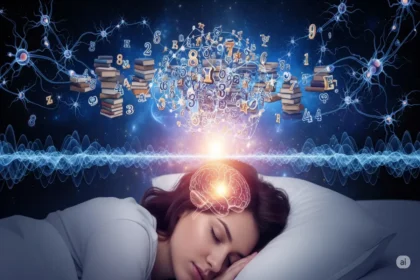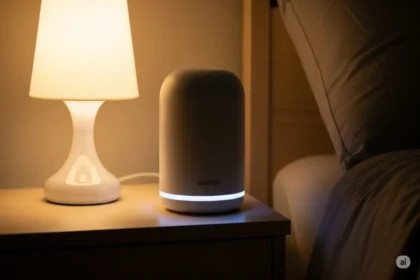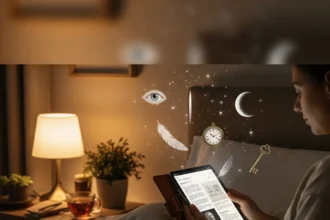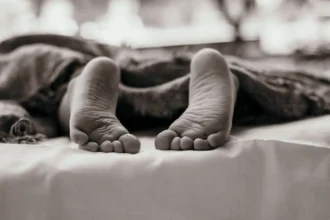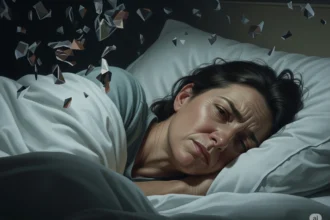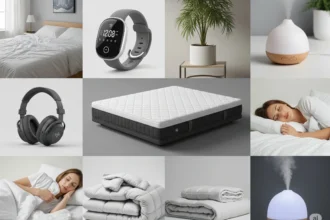The afternoon slump is a familiar sensation, a gentle dip in energy that often prompts a reach for coffee or a quick stretch. But for many, this feeling transcends normal fatigue, manifesting as an overwhelming, persistent urge to sleep that interferes with daily life. This isn’t just being “a little tired”; it’s Excessive Sleepiness, a debilitating symptom that can mask a deeper, often undiagnosed, underlying health issue. While occasional drowsiness is a normal response to insufficient sleep, chronic, uncontrollable sleepiness is a red flag, demanding attention and often, medical investigation. Understanding when this pervasive tiredness crosses the line from inconvenience to a cause for concern is crucial for reclaiming vitality and protecting long-term health.
Consider John, a seemingly energetic accountant in his mid-40s. For years, he dismissed his frequent nodding off during meetings, his struggles to stay awake during long drives, and his constant need for weekend lie-ins as simply being “a busy guy.” He attributed his growing irritability and difficulty concentrating to work stress. His wife, however, noticed his thunderous snoring and the gasps that punctuated his nights. It wasn’t until John nearly fell asleep at the wheel, narrowly avoiding an accident, that he sought help. His diagnosis? Severe Obstructive Sleep Apnea. John’s story is a powerful reminder that what seems like mere tiredness can be a symptom of a serious, treatable condition, silently eroding health and jeopardizing safety.
The Spectrum of Sleepiness: From Normal Fatigue to Excessive Drowsiness
To decode excessive sleepiness, it’s important to differentiate it from normal, transient fatigue.
- Normal Fatigue: This is the expected tiredness that occurs after a long day, intense physical activity, or a single night of insufficient sleep. It resolves with adequate rest. You might feel sleepy, but you can generally push through it if necessary.
- Excessive Sleepiness (Hypersomnia): This is a persistent, overwhelming urge to sleep during the day, even after getting what seems like sufficient sleep at night. It manifests as difficulty staying awake, involuntary napping, feeling unrefreshed despite sleep, and a profound impact on daily functioning. It’s not just feeling tired; it’s feeling sleepy when you should be awake and alert.
The Epworth Sleepiness Scale (ESS) is a commonly used tool to assess subjective daytime sleepiness. If your score on the ESS is consistently high (e.g., above 10), it suggests a level of sleepiness that warrants further investigation.
When to Worry: Red Flags for Excessive Sleepiness
While everyone feels tired occasionally, certain signs indicate that your excessive sleepiness is more than just a passing phase and might be a symptom of an underlying disorder:
- Involuntary Napping: You fall asleep unintentionally in situations where you should be awake and alert (e.g., during conversations, at work, while driving, in a waiting room).
- Non-Restorative Sleep: You sleep for what seems like enough hours but wake up feeling unrefreshed, as if you haven’t slept at all.
- Cognitive Impairment: Persistent brain fog, difficulty concentrating, memory problems, slow reaction times, and impaired decision-making.
- Mood Changes: Increased irritability, anxiety, depression, or emotional lability.
- Safety Concerns: Drowsy driving, workplace errors, or near-miss accidents due to falling asleep.
- Loud Snoring or Breathing Pauses: A bed partner reports loud, chronic snoring, gasping, or observed pauses in your breathing during sleep.
- Irresistible Urge to Move Legs: Uncomfortable sensations in your legs, particularly at rest, that are relieved by movement.
- Sudden Muscle Weakness (Cataplexy): Experiencing sudden loss of muscle tone triggered by strong emotions (e.g., laughter, anger), even if you remain conscious.
- Hallucinations at Sleep Onset/Wake-up: Vivid, dream-like experiences when falling asleep or waking up.
- Sleep Paralysis: Waking up unable to move or speak for a short period.
If you consistently experience one or more of these symptoms, it’s time to seek professional medical advice.
The Hidden Culprits: Common Causes of Excessive Sleepiness
Excessive sleepiness is rarely a standalone issue; it’s almost always a symptom of an underlying problem. These can range from lifestyle factors to serious medical conditions.
1. Chronic Sleep Deprivation
This is the most common cause. In our 24/7 culture, many people simply don’t get enough sleep. Work demands, social commitments, digital distractions, and the pervasive “always-on” mentality lead to a chronic accumulation of “sleep debt.” While you might adapt to functioning on fewer hours, your body and brain are still accumulating deficits, leading to persistent daytime sleepiness. The recommended 7-9 hours for adults is a biological imperative, not a suggestion.
2. Obstructive Sleep Apnea (OSA)
OSA is a leading medical cause of excessive daytime sleepiness. It occurs when the airway repeatedly collapses during sleep, causing breathing to stop for short periods. These apneas lead to drops in oxygen levels and brief awakenings (often hundreds of times a night) to gasp for air. The snorer is usually unaware of these awakenings, but their sleep is severely fragmented, preventing restorative deep and REM sleep.
- Symptoms: Loud, chronic snoring (often with observed pauses), gasping/choking, morning headaches, dry mouth, and, crucially, overwhelming daytime sleepiness.
- Impact: Beyond EDS, OSA significantly increases the risk of high blood pressure, heart attack, stroke, Type 2 Diabetes, and accidents.
3. Narcolepsy
Narcolepsy is a chronic neurological disorder characterized by the brain’s inability to properly regulate sleep-wake cycles, often due to a deficiency of hypocretin (orexin), a neurotransmitter that promotes wakefulness.
- Symptoms: Overwhelming daytime sleepiness (irresistible sleep attacks), cataplexy (sudden muscle weakness triggered by emotion), sleep paralysis, and vivid hallucinations at sleep onset/offset.
- Impact: Profoundly impacts quality of life, education, employment, and safety due to unpredictable sleep attacks.
4. Restless Legs Syndrome (RLS)
RLS is a neurological sensory-motor disorder characterized by an irresistible urge to move the legs, usually accompanied by uncomfortable sensations, particularly at rest and in the evening/night.
- Symptoms: Creeping, crawling, aching, or tingling sensations in the legs that are relieved by movement; symptoms worsen with rest and at night.
- Impact: Severely disrupts sleep initiation and maintenance, leading to chronic sleep deprivation, daytime fatigue, and mood disturbances.
5. Insomnia
While seemingly contradictory, chronic insomnia can lead to excessive daytime sleepiness. If you consistently struggle to fall asleep or stay asleep, despite spending enough time in bed, the resulting sleep deprivation will manifest as daytime drowsiness. The anxiety about not sleeping can also create a vicious cycle, making sleep even more elusive.
6. Medications and Substances
Many common medications can cause drowsiness as a side effect, including:
- Antihistamines (especially older generations)
- Antidepressants
- Opioids
- Muscle relaxants
- Sedatives and tranquilizers
- Certain blood pressure medicationsAlcohol, while initially sedating, disrupts sleep architecture and can lead to fragmented sleep and next-day drowsiness.
7. Other Medical Conditions
A wide range of medical conditions can cause or contribute to excessive sleepiness:
- Hypothyroidism: An underactive thyroid can slow metabolism, leading to fatigue and sleepiness.
- Anemia: Low red blood cell count (often due to iron deficiency) reduces oxygen delivery, causing fatigue.
- Chronic Pain: Persistent pain can disrupt sleep and lead to daytime drowsiness.
- Depression and Anxiety: These mental health conditions often manifest with significant fatigue and sleep disturbances (either too much or too little sleep).
- Neurological Disorders: Conditions like Parkinson’s disease, multiple sclerosis, or brain injuries can affect sleep-wake regulation.
- Fibromyalgia and Chronic Fatigue Syndrome: These conditions are characterized by widespread pain and debilitating fatigue, often accompanied by non-restorative sleep.
The Diagnostic Journey: Finding Answers
If you suspect your excessive sleepiness is more than just normal tiredness, consulting a healthcare professional is essential. The diagnostic process typically involves:
- Thorough Medical History: Your doctor will ask detailed questions about your sleep patterns, daytime symptoms, lifestyle, medications, and family history.
- Sleep Diary: You may be asked to keep a detailed record of your sleep and wake times, naps, caffeine/alcohol intake, and daytime symptoms for 1-2 weeks.
- Physical Examination: To check for any obvious underlying medical conditions.
- Blood Tests: To rule out conditions like anemia, thyroid dysfunction, or kidney problems.
- Referral to a Sleep Specialist: If a primary cause isn’t immediately apparent, or if a sleep disorder is suspected, you’ll likely be referred to a board-certified sleep physician.
- Polysomnography (PSG): An overnight sleep study in a lab, considered the gold standard. It monitors brain waves (EEG), eye movements (EOG), muscle activity (EMG), heart rate (ECG), breathing patterns, oxygen levels, and leg movements to diagnose conditions like sleep apnea, RLS, and other nocturnal disturbances.
- Multiple Sleep Latency Test (MSLT): Often performed the day after a PSG, this test measures how quickly you fall asleep during several scheduled naps throughout the day. It’s crucial for diagnosing narcolepsy and idiopathic hypersomnia (excessive sleepiness without an identifiable cause).
Bridging the Gap: Solutions for Alertness and Well-being
Once the underlying cause of excessive sleepiness is identified, effective treatments are available. The approach is always tailored to the specific diagnosis.
1. Optimizing Sleep Hygiene
For many, simply improving sleep habits can make a significant difference, especially if chronic sleep deprivation is the primary culprit:
- Consistent Sleep Schedule: Go to bed and wake up at the same time every day, even on weekends.
- Create a Sleep Sanctuary: Ensure your bedroom is dark, quiet, cool, and comfortable.
- Relaxing Bedtime Routine: Wind down for 30-60 minutes before bed with calming activities.
- Limit Stimulants/Alcohol: Avoid caffeine and alcohol, especially in the afternoon/evening.
- Screen-Free Zone: Keep electronic devices out of the bedroom.
2. Targeted Medical Treatments
- For Sleep Apnea: Continuous Positive Airway Pressure (CPAP) therapy is the most common and effective treatment. Oral appliances or surgery may also be options.
- For Narcolepsy: Medications like stimulants (e.g., modafinil) to promote wakefulness, or sodium oxybate to improve nighttime sleep and reduce daytime sleepiness, are often prescribed. Scheduled naps are also a key management strategy.
- For Restless Legs Syndrome: Iron supplementation (if deficient), dopaminergic agents, or alpha-2 delta ligands (e.g., gabapentin) are common treatments.
- For Insomnia: Cognitive Behavioral Therapy for Insomnia (CBT-I) is the first-line treatment, addressing the thoughts and behaviors that perpetuate insomnia. Medications may be used short-term.
- Addressing Underlying Conditions: Treating conditions like hypothyroidism, anemia, depression, or chronic pain will often alleviate associated sleepiness.
- Medication Review: Working with your doctor to adjust or change medications that cause drowsiness.
3. Lifestyle and Behavioral Interventions
- Stress Management: Incorporate stress-reduction techniques like mindfulness, meditation, yoga, or deep breathing into your daily routine.
- Regular Exercise: Physical activity can improve sleep quality and reduce daytime fatigue, but avoid intense exercise too close to bedtime.
- Healthy Diet: A balanced diet supports overall energy levels and can prevent blood sugar fluctuations that contribute to drowsiness.
Conclusion: Reclaiming Alertness, Reclaiming Life
Excessive sleepiness is not a character flaw or a sign of laziness; it is a serious symptom that demands attention. Ignoring it can lead to impaired performance, strained relationships, compromised safety, and a significantly increased risk of chronic health conditions. In a world that often pushes us to do more with less sleep, recognizing the profound impact of persistent drowsiness is a vital act of self-care.
The journey from chronic sleepiness to vibrant alertness begins with acknowledging the problem and seeking professional guidance. By decoding the underlying causes and embracing evidence-based solutions, individuals can break free from the perpetual fog of fatigue. Reclaiming your energy, your focus, and your zest for life is not just about feeling better; it’s about unlocking your full potential and living each day with clarity, purpose, and renewed vigor. It’s time to stop just surviving and start truly thriving.
Disclaimer: The information provided in this article is for general informational purposes only and does not constitute medical advice. It is not a substitute for professional medical advice, diagnosis, or treatment. Always seek the advice of your physician or other qualified health provider with any questions you may have regarding a medical condition. Never disregard professional medical advice or delay in seeking it because of something you have read on this website.

